I promised cham towers last time, so cham towers you shall have. However, I took a lot of pictures on the 18th, so I've moved the remainder, documenting everyday aspects of life such as roadside shrines, plus of course the ever-present flowers, to a third post.
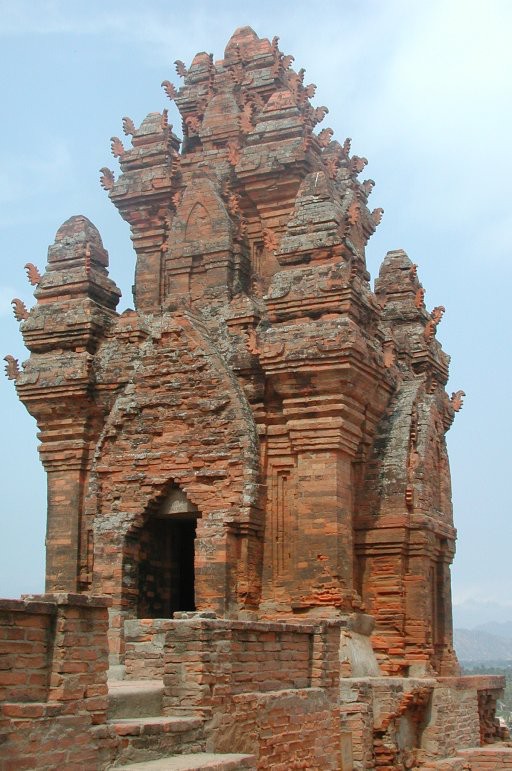
We went to Nha Trang, which is a beach resort, from Da Lat, by way of Phan Rang; and since this is the perfect route (according to the guide book) to see the Plo Kong Garai Cham towers. Also, my pictures seem to match other pictures of these particular cham towers...so I'm pretty sure that's what these are.
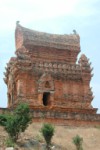
They're situated at the top of a quite steep climb, so we got an excellent workout climbing up to see them. The region around them, in contrast to much of Viet Nam, is dry: the ground is exposed and the trees thorny.

According to our trusty Lonely Planets guidebook, the Plo Kong cham towers were built at the end of the 13th century during the reign of Cham monarch Jaya Simhavarman III. These folks (as the name might indicate) are Hindu; but of all the varied religions listed in the guidebook, they're listed last, and barely get a paragraph, which notes after the fall of the Champa in the 15th ca, many converted to Islam.
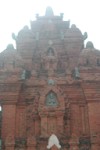
I loved the cham towers, which spoke to me of such a distant age. I have a peculiar fondness for worn things as well, though unfortunately, there is currently, according to our guide, no known techniques to prevent or even effectively slow the deteroriation of these magnificent structures.

However, there are still a few left; these temples, we were given to understand, are still used for holy ceremonies, particularly the new year (Kate) which takes place around October. I was therefore a little taken aback, while wandering around the structures, to discover what appeared to be the Vietnamese version of a poker game in one of the towers! The players smoked and were in their 20s, so I suppose the respect of youth is the same worldwide...or perhaps they were enjoying the superb cross-ventilation.
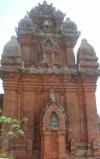
I originally deleted this image, because it was so similar to the one that headed the file; but as I awoke this morning it came to me that the silhouette of cham towers likely represents a divine flame, in the way floor plans of Catholic Basilicas are often cruciform. (I very much doubt I came up with this idea on my own: more likely it is a half-remembered comment by a guide, or something I read, and in any case I do not guarantee its veracity.. Nevertheless I was able to do little research on towers via the www, as our dsl has been so flaky. Guess I'll just have to do it the old fashioned way. Lucky for me there is a university library half a mile away...)
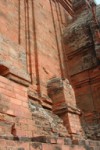
Our guides also told us cham towers are famous for having no mortar between the bricks—a technique now lost. Certainly I found the workmanship inspiring, and took this picture to give a sense of the wonderful textures inherent in the soft (or so it seemed to me) red brick. That white stuff in the center of the picture is likely a mortar-based repair.
file created 24may05
Unless otherwise noted, text, image and objects depicted therein copyright 1996--present sylvus tarn.
Sylvus Tarn